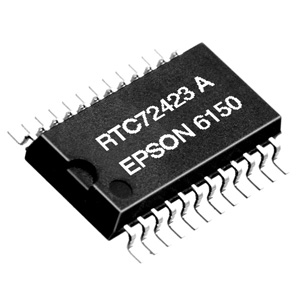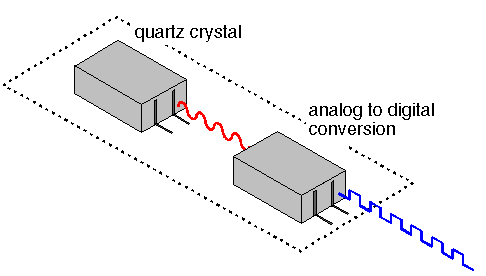Even after rebooting your computer you get exact date and time. Have you ever given it a thought that how is it possible? The answer is pretty simple; there must be an independent power source running a clock which runs even when system main power is off. Let us explore it.
RTC- Real Time Clocks
There are 2 clocks in a computer. One is a hardware clock known as the Real Time Clock and the other is Software Clock.
Real Time Clock is battery backup power clocks so that it tracks the time even while the computer is turned off, or in low  power state. Basically RTC is not a physical clock but is an IC which is present on the motherboard and responsible for timing functioning of the system and system clock. Real Time Clock is responsible to make sure that all the processes occurring in the system are properly synchronized (basically this is task of system clock, but system clock is dependent on RTC, therefore RTC is indirectly responsible for interrupts, timer, task scheduling and synchronization etc.). Today many companies like Philips, ST Microelectronics, Texas Instruments manufacture RTCs. There has been a continuous development in RTC, like lowering power consumption, improving frequency stability.
power state. Basically RTC is not a physical clock but is an IC which is present on the motherboard and responsible for timing functioning of the system and system clock. Real Time Clock is responsible to make sure that all the processes occurring in the system are properly synchronized (basically this is task of system clock, but system clock is dependent on RTC, therefore RTC is indirectly responsible for interrupts, timer, task scheduling and synchronization etc.). Today many companies like Philips, ST Microelectronics, Texas Instruments manufacture RTCs. There has been a continuous development in RTC, like lowering power consumption, improving frequency stability.
 power state. Basically RTC is not a physical clock but is an IC which is present on the motherboard and responsible for timing functioning of the system and system clock. Real Time Clock is responsible to make sure that all the processes occurring in the system are properly synchronized (basically this is task of system clock, but system clock is dependent on RTC, therefore RTC is indirectly responsible for interrupts, timer, task scheduling and synchronization etc.). Today many companies like Philips, ST Microelectronics, Texas Instruments manufacture RTCs. There has been a continuous development in RTC, like lowering power consumption, improving frequency stability.
power state. Basically RTC is not a physical clock but is an IC which is present on the motherboard and responsible for timing functioning of the system and system clock. Real Time Clock is responsible to make sure that all the processes occurring in the system are properly synchronized (basically this is task of system clock, but system clock is dependent on RTC, therefore RTC is indirectly responsible for interrupts, timer, task scheduling and synchronization etc.). Today many companies like Philips, ST Microelectronics, Texas Instruments manufacture RTCs. There has been a continuous development in RTC, like lowering power consumption, improving frequency stability.System Clock is maintained by the kernel of an operating system and is used to set the tasks and processes – their synchronization and scheduling, settings and managing interrupts, setting timer etc. The system clock reports seconds and microseconds since a start point from the system boot up procedure. Basically the system clock is digital signal emitter, which emits signal composed of high (1) and low (0), because all the machines and their processes understand the language of binary.
Working
Real Time Clock as earlier mentioned is Integrated Circuit. It has a crystal oscillator. Crystal Oscillator uses a piezoelectric crystal to generate signals. The crystals have a crystalline structure (regular and repeated pattern of atoms). Whenever a field is applied across the crystal, its crystalline structure distorts, and on removal of the field it tends to return to its original crystalline structure, thus generating an electric signal of very precise frequency.

The main property of any oscillator is frequency stability that is variation in temperature, load and change in power supply should not change the frequency of the output signal generated. Crystal oscillator excels in the field of frequency stability and is also cost effective.
Generally the oscillator frequency is set to 32.768 KHz, because this is the frequency used in clocks and hence setting of system clock and timers is convenient.
The powering of a Real Time Clock is done by a Lithium battery generally. RTC should also meet the requirement of minimum operational current, which has gradually drawn to as low as 100nA, so as to keep RTC running over long period of time. Whenever the motherboard is brought to power, then the battery charges automatically, hence ready for future use.
Filed Under: How to


Questions related to this article?
👉Ask and discuss on Electro-Tech-Online.com and EDAboard.com forums.
Tell Us What You Think!!
You must be logged in to post a comment.